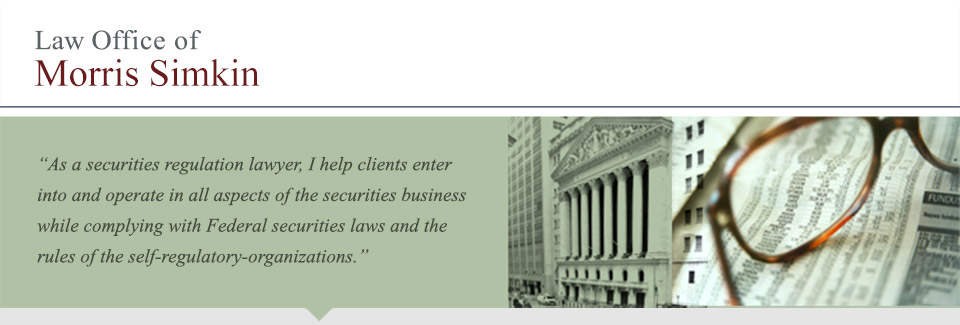HAS FINRA ENFORCEMENT REVOKED THE 5% MARK-UP POLICY?
The 5% mark-up policy has been in the NASD and FINRA rule books since 1943, now part of Rule 2121, Fair Prices and Commissions. But a recent settled FINRA enforcement case suggests that FINRA Enforcement no longer honors it.
A version of this blog was provided to FINRA Enforcement for their review and comment. Their comments are reflected in bold italics. FINRA Enforcement notes that they have brought proceedings involving mark-ups of less than 5%.
What does this mean?
To avoid an enforcement action, brokers trading with their customers as a principal, including as riskless principal, must justify their mark-ups based on the relevant factors in Rule 2121.01(b):
- Type of security;
- Availability in the market;
- Price of the security;
- Amount of money involved in the trade;
- Pattern of mark-ups; and
- The nature of the member’s business.
If the trade is in a bond, other than a municipal bond, additional factors under Rule 2121.02 that must also be considered include:
- Dealer’s contemporaneous cost;
- The prevailing market price;
- Prices of contemporary inter-dealer trades; and
- If none of the above are available, the contemporaneous transactions in similar securities.
The Enforcement Case: facts presented.
In a recently settled Enforcement Case (NTB Financial Corporation, Acceptance, Waiver and Consent (AWC) Case No. 2015047738901, December 10, 2018) FINRA censured and fined the firm $45,000 for violating Rule 2121. The case involved 71 principal transactions in the third quarter of 2015 with customers involving one corporate bond. The total mark-up in these trades was $43,142.06 that the firm returned to these customers in anticipation of this action.
The 71 transactions occurred on 7 of the 65 trading days in the quarter. The table below lists the trade dates, the period of time between when NTB bought the bond on that day and when it sold the bond to its customers on the same day, and the mark-up percentages.
| Trade Date |
| Time between Purchase and Sale to Customer- hour and minutes | Mark-Up percentage |
| August 27, 2015 | 5 | 1:12 | 4.64% |
| August 27 | 2 | 1:12 | 4.84% |
| September 3 | 1 | 2:52 | 4.83 |
| September 4 | 17 | 1:31 | 4.72 |
| September 8 | 3 | 1:12 | 4.84 |
| September 17 | 11 | 6:15 | 4.66% |
| September 22 | 6 | 0:12 | 5.02% |
| September 22 | 12 | 6:22 | 5.07% |
| September 25 | 14 | 3:48 | 5.01% |
The Enforcement Case: facts omitted
There was no data or discussion of the contemporaneous prices of trades in the bond by other brokers.
NTB cleared on a fully disclosed basis through another broker. No information as to what, if any, compliance and other reports from the clearing broker required under FINRA Rule 4311 were made available to or utilized by NTB. There was no discussion of NTB’s Written Supervisory Procedures or compliance policies regarding mark-ups. There was no discussion of the market for the subject corporate bond—e.g. number of trades per day, execution prices, bids and asked at the time of these trades, NTB’s role in this market, etc. Nor was there any information as to any prior FINRA exams where principal trading by NTB was an issue.
FINRA Enforcement notes that a review of publicly available TRACE data on the unnamed bond showed that the next highest mark- up in a subsequent contemporaneous trade by another broker-dealer was 1.44%.
Instead, the AWC focused on the five (5) factors in Rule 2121.01(a) sets forth above. It did so without any discussion of their relevance to the fact that all the trades involved were slightly above or below the 5% mark-up policy.
If FINRA wanted to sanction the firm, but not de facto revoke the 5% policy it could just as easily brought the case as a violation of the best execution rule, Rule 5310.
FINRA Enforcement noted that it has brought cases involving mark-ups of less than 5%.
Takeaway
The FINRA rulebook continues to acknowledge the 5% mark-up rule. However, in a principal trade with a customer, brokers would be prudent to compare their mark-ups with those in contemporaneously executed trades as publicly reported- e.g. on TRACE.
Discussion
Please feel free to contact me (phone 914 646 8035 or email msimkin@securitiesregslawyer.com) with any questions or to discuss this further.
January 15, 2019
